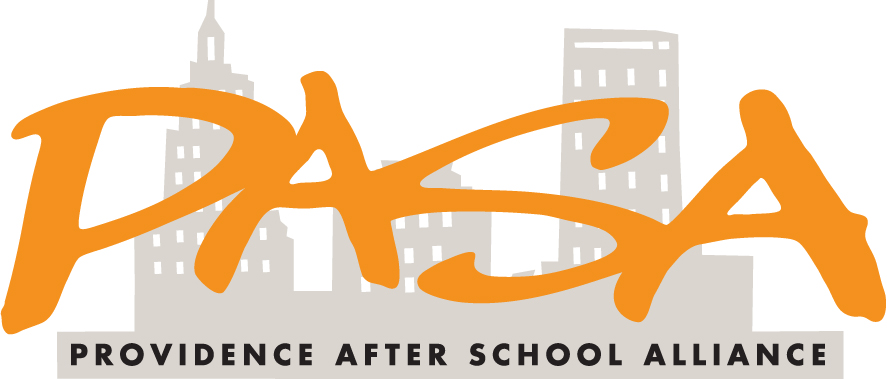
This post originally appeared on the Cross & Joftus blog. Cross & Joftus works with states, foundations, school districts, and nonprofit organizations to meet their education goals. PASA worked with Cross & Joftus to identify areas of Common Core alignment and improvement in our AfterZone Summer Scholars program.
Cheryl Krehbiel helps schools, districts, and states improve instruction, align curriculum, and better support teachers through more effective professional development

Students in DownCity Design’s Design For Growth AfterZone Program building a water collection structure for
Southside Land Trust’s Peace and Plenty garden. Photo by Jori Ketten.
By Cheryl Krehbiel, Cross & Joftus Associate
Across the country, Expanded Learning Organizations (ELOs) that run afterschool and summer programs are doing their part to support students in their efforts to meet increased learning expectations. As states are implementing the Common Core State Standards (CCSS) or other standards focused on college and career readiness, some ELOs are taking a bold step to closely examine their current practices and establish plans and milestones for further improvement by more closely aligning their work to these new standards.
As partners in the education process, ELOs provide many students with the additional time needed to learn at high levels. ELOs also incorporate different learning styles and approaches including more hands-on projects and problem solving. For many ELOs, alignment to the new standards provides an opportunity to strengthen their programs and is a must for sustainability as districts seek to align all student supports with the new standards. While the idea of ELOs aligning their programming with the CCSS or other state standards is appealing, exactly how that could or should happen is less clear. With support from the Wallace Foundation, Cross & Joftus has developed a framework that ELOs can use to assess how well they are aligned to the CCSS and what it would take to improve alignment. The framework focuses on four key areas identified as critical for alignment: organizational infrastructure, instruction, curriculum, and student learning and assessment. Each key area has indicators of alignment which provide greater clarity and can be used to develop an action plan for improved alignment. We tested the tools and process with a range of summer and afterschool programs.
In designing and testing the framework and tools, one of the critical challenges we grappled with was reconciling the fact that the CCSS were created for schools and ELOs are different from schools in many ways. In addition, ELOs have the ability to pick and choose whether, how, and to what extent they want to align their program with the CCSS so that they are improving leaning and still remaining true to their mission and vision. What this means is that ELOs can focus on a limited number of high-leverage instructional strategies that support program goals. For instance, ELOs may choose to focus on the habits of mind or real world connections through project based learning, or delivering highly effective close reading lessons as their primary strategy for aligning with the new standards.
We offer a few lessons from our early work in helping ELOs to align with the CCSS.
1. The first step in aligning with the CCSS and/or other state standards is for ELOs to agree upon and communicate a clear vision for what CCSS alignment should look like for their organization. With a clear vision in place, ELOs can develop systems to ensure that program leaders and providers are on the same page when it comes to alignment. A clear vision also helps to bring coherence to efforts underway for ELOs with multiple programs in various locations.
2. Everyone in the ELO working with students – staff, partners, and volunteers— needs some basic information about the CCSS. There are many misconceptions about the new standards and their implications for teaching and learning. Making sure everyone has baseline knowledge is an important early step in alignment. Some ELOs are addressing this issue by ensuring that at least one person on staff is well versed in the CCSS and can answer questions as they arise. Depending upon the skill level of this point person, they may also be able to provide ongoing training to teachers and other staff to support alignment.
3. Many ELOs already have in place a number of resources that could be re-purposed to better support alignment such as professional development time, curriculum banks, and virtual or distance learning. A number of ELOs are already working to revise curriculum and PD to build knowledge and awareness of the CCSS and to foster alignment. This ranges from purchasing new curriculum units that are designed specifically to be aligned with the CCSS to creating new information and resources to support alignment with the CCSS more broadly.
4. ELOs have an opportunity to focus on authentic assessments that mirror more closely what students will encounter with new performance based assessments. Many ELOs are using assessments that are not aligned to the CCSS, but with some support could develop basic rubrics to critique and provide feedback on student projects and presentations that are a key part of many ELO programs.
In the coming months we will continue to explore this issue and will share new tools and strategies as they emerge. Learn more about our work in the Expanded Learning practice area.
